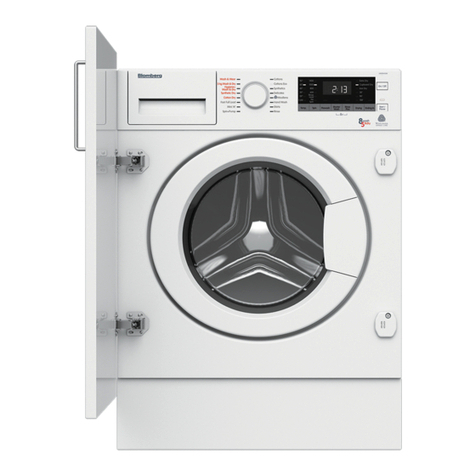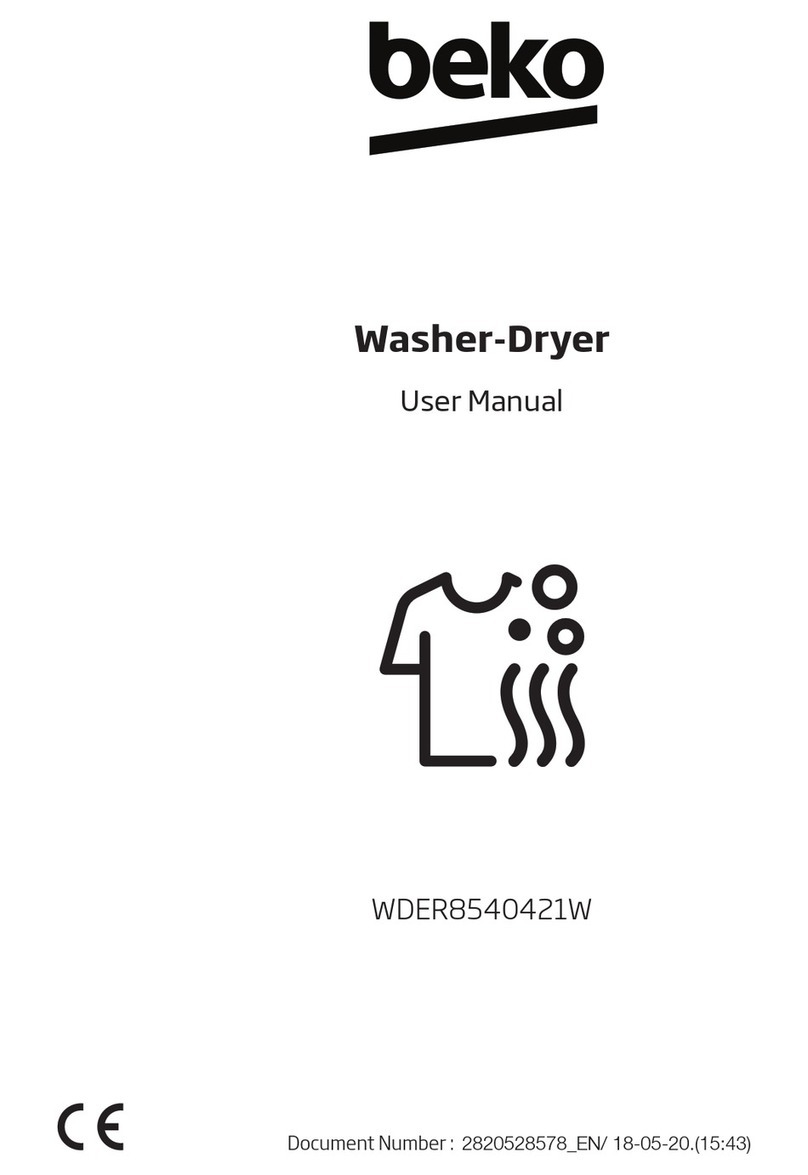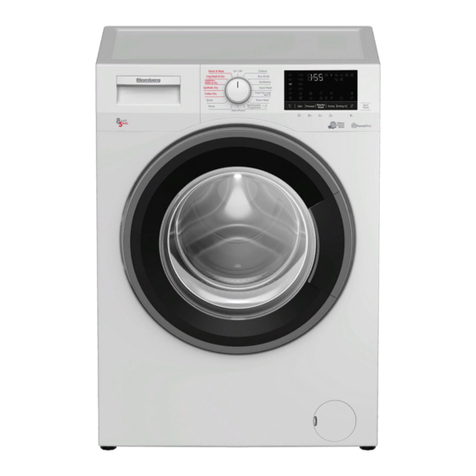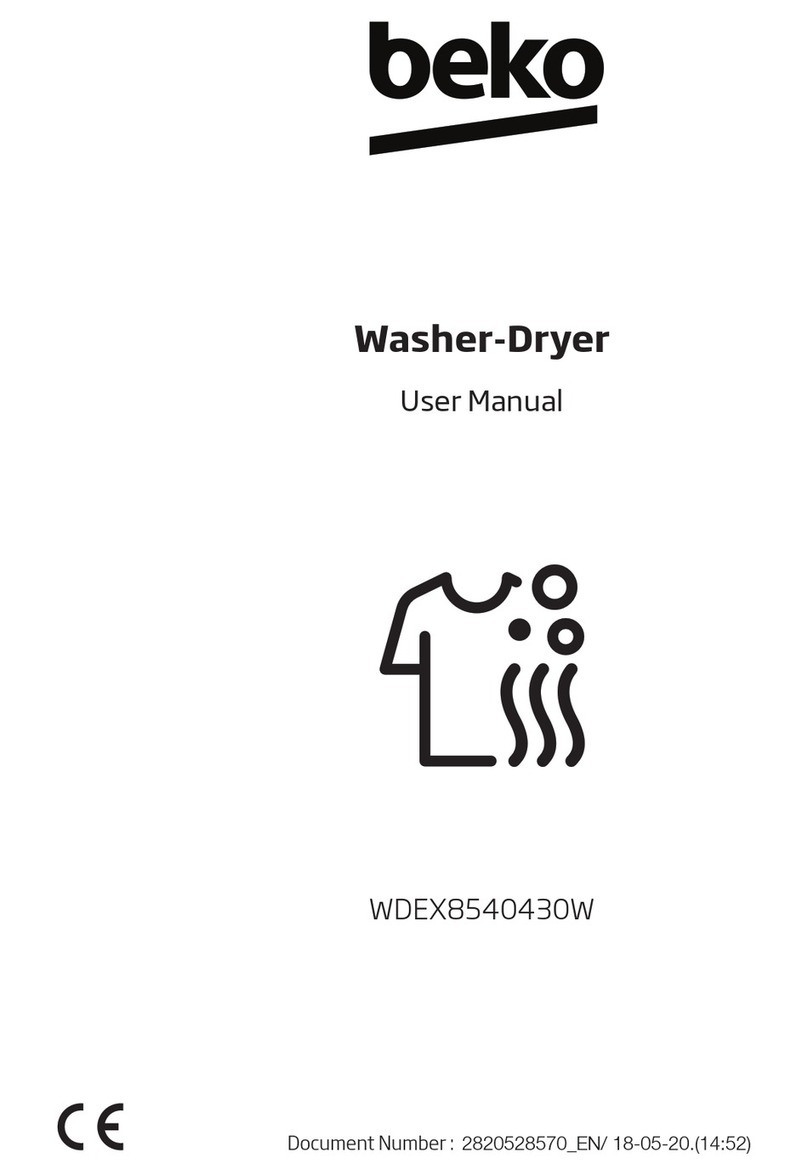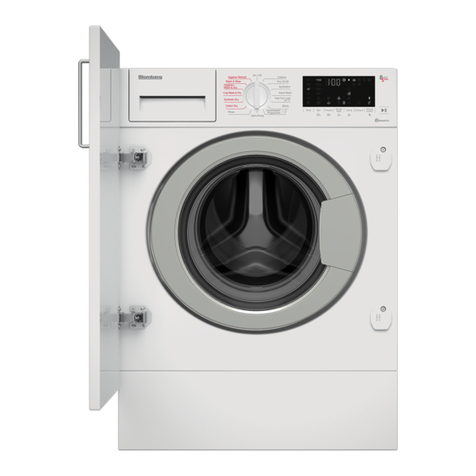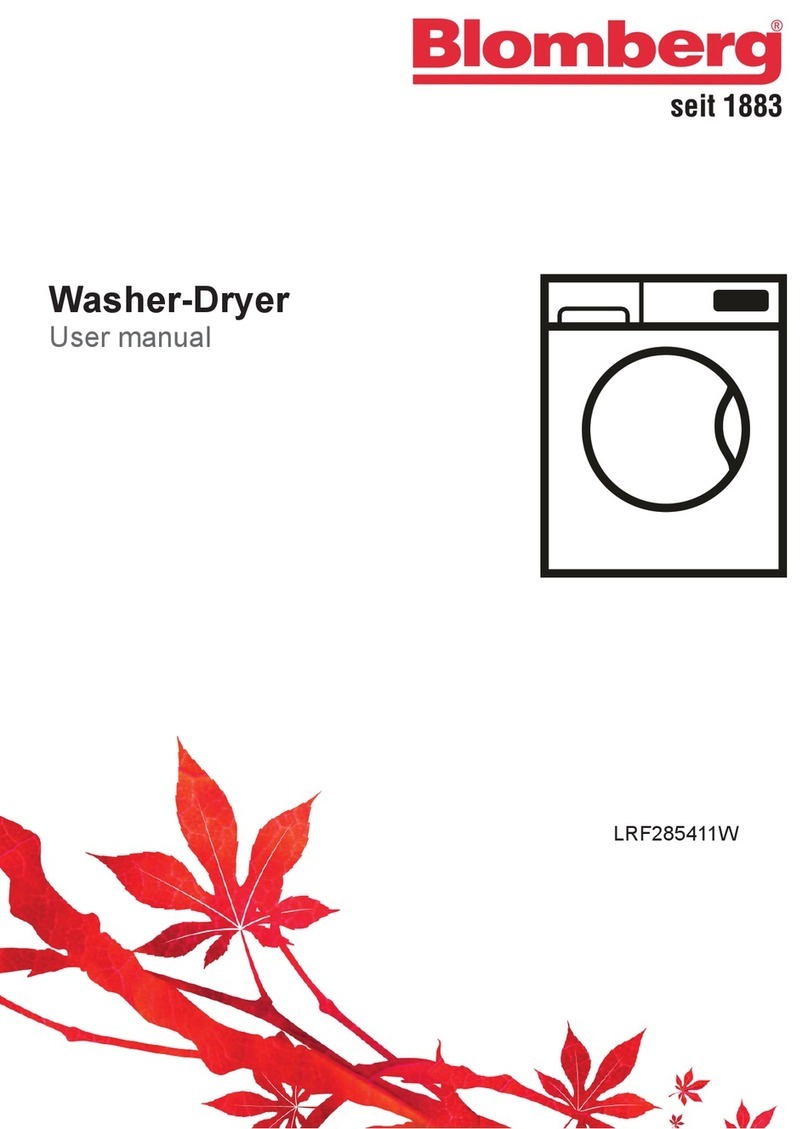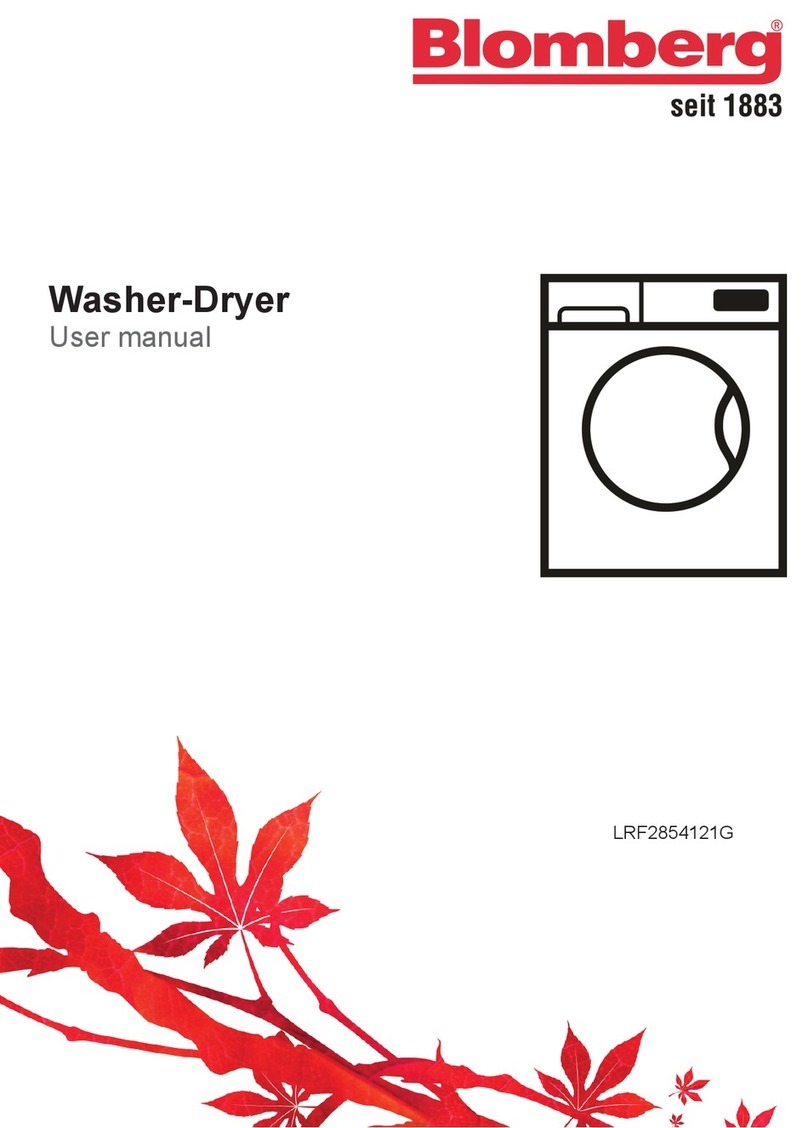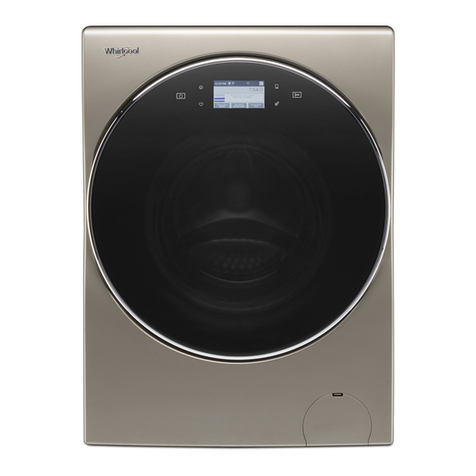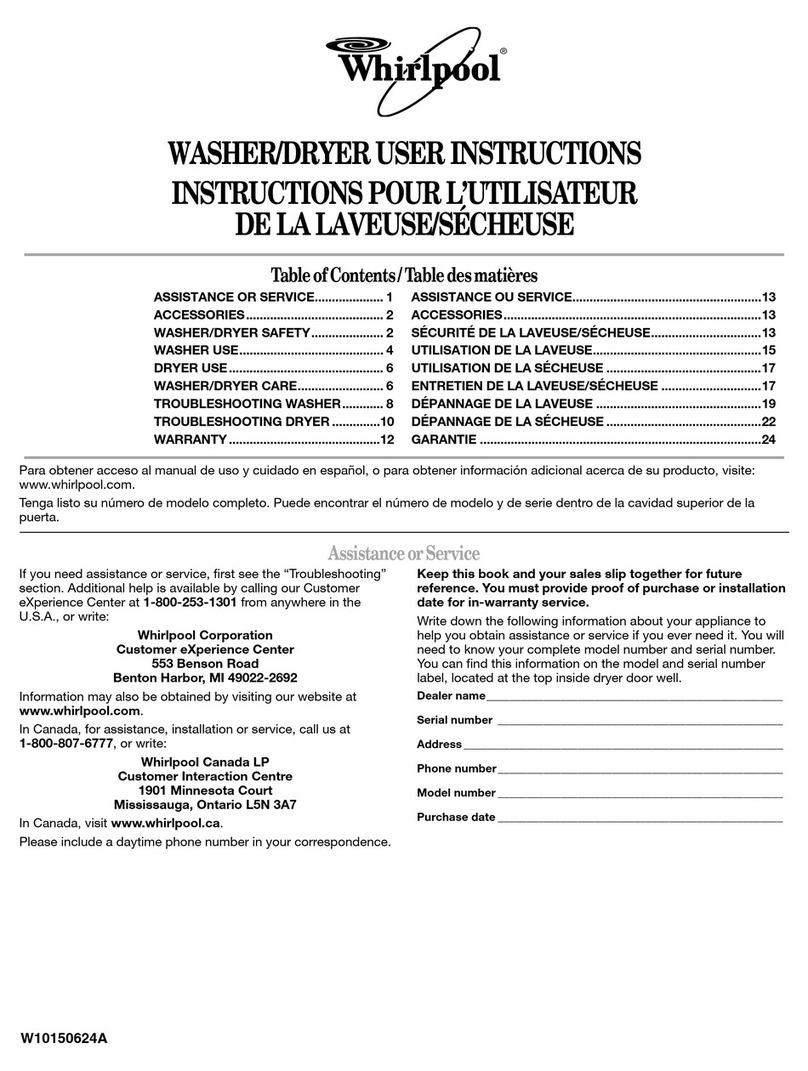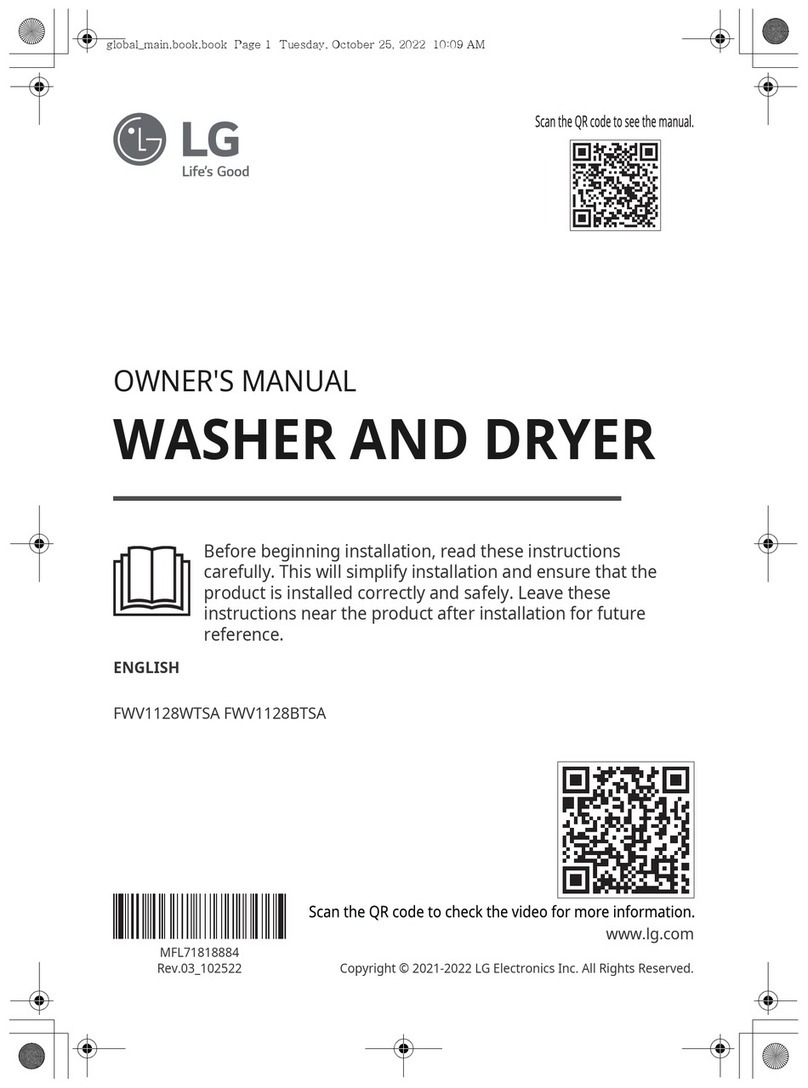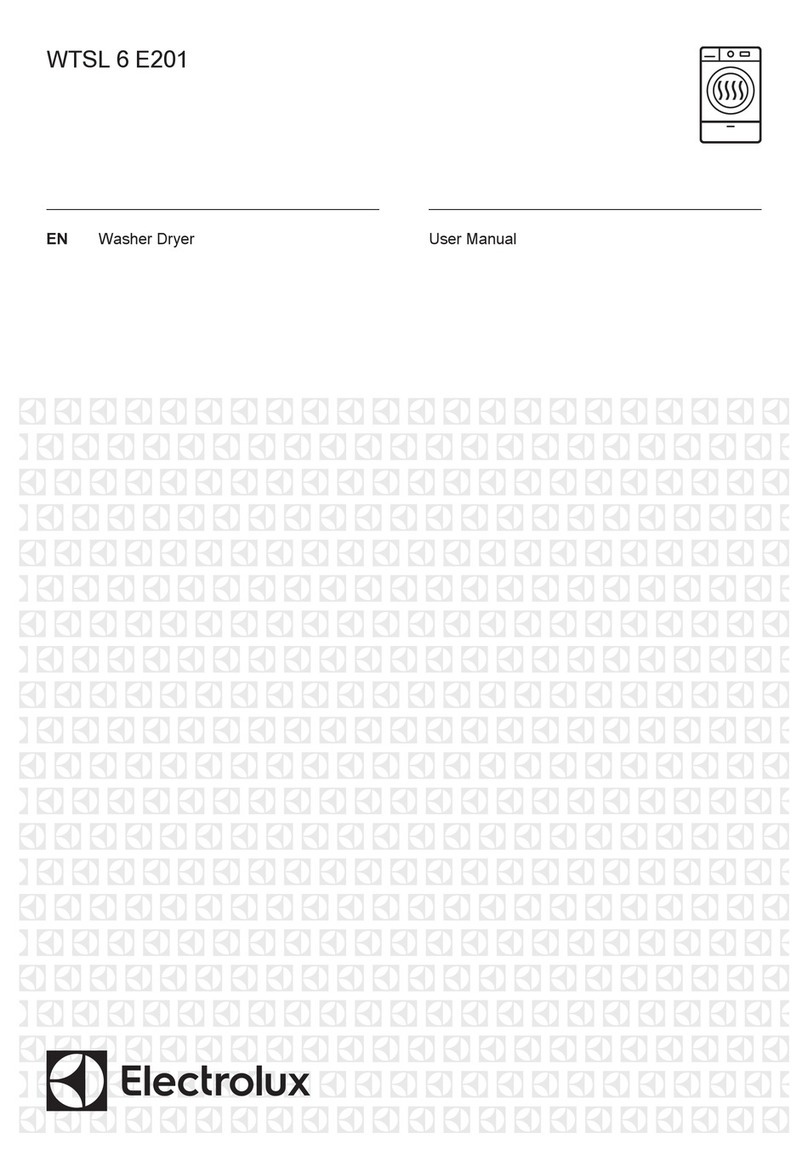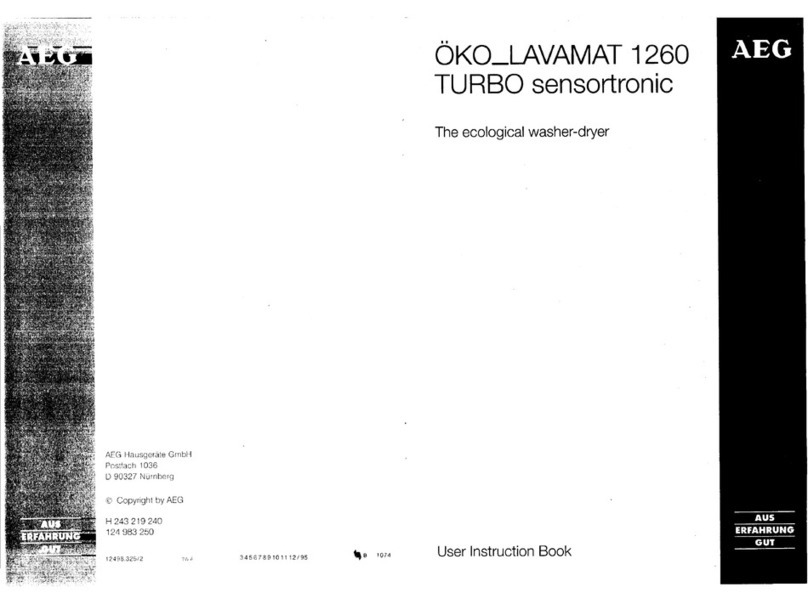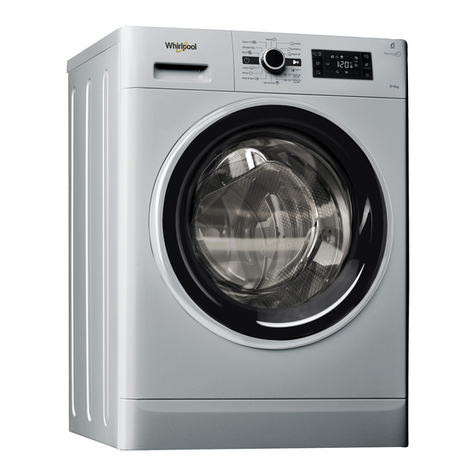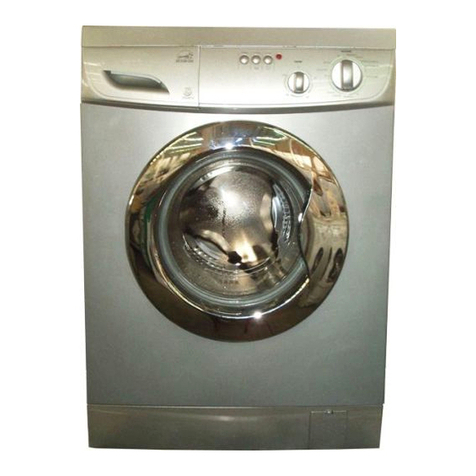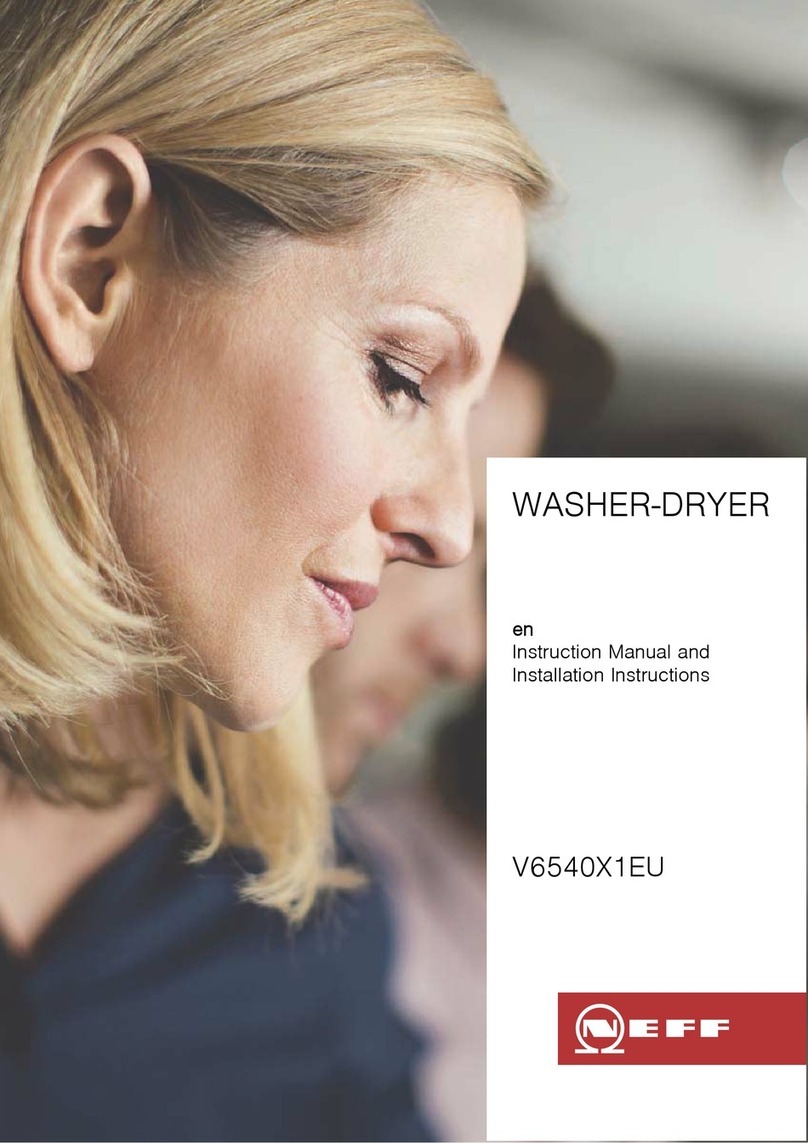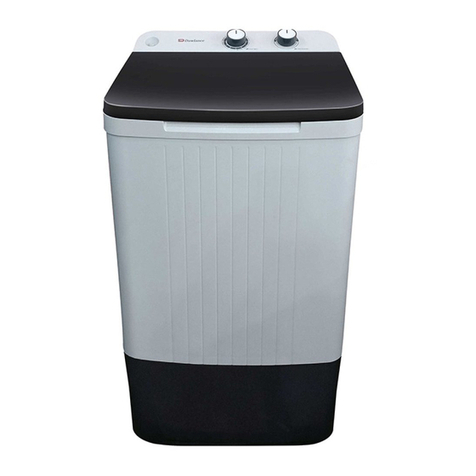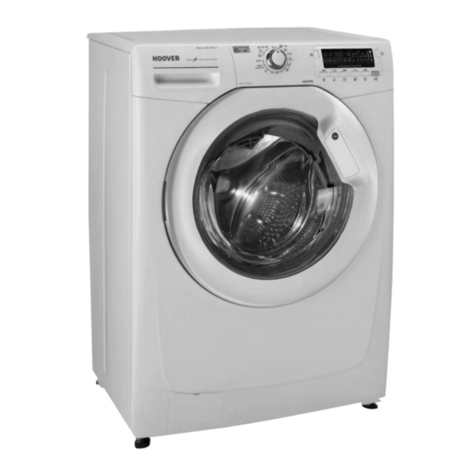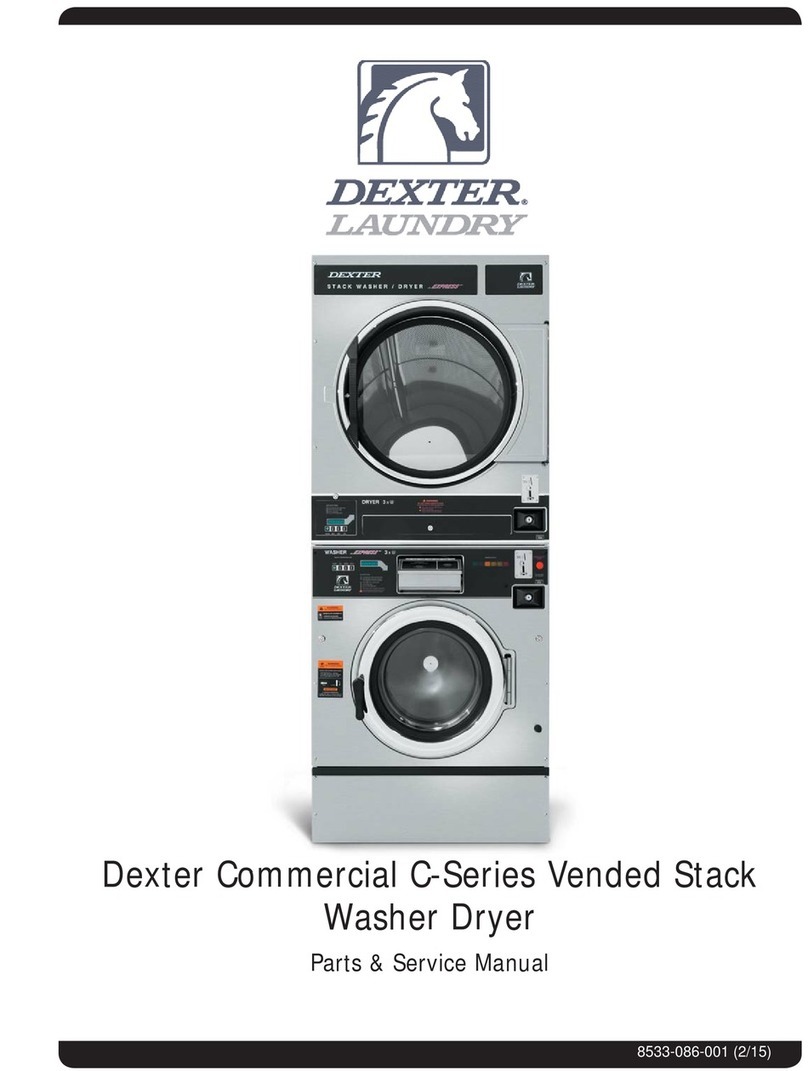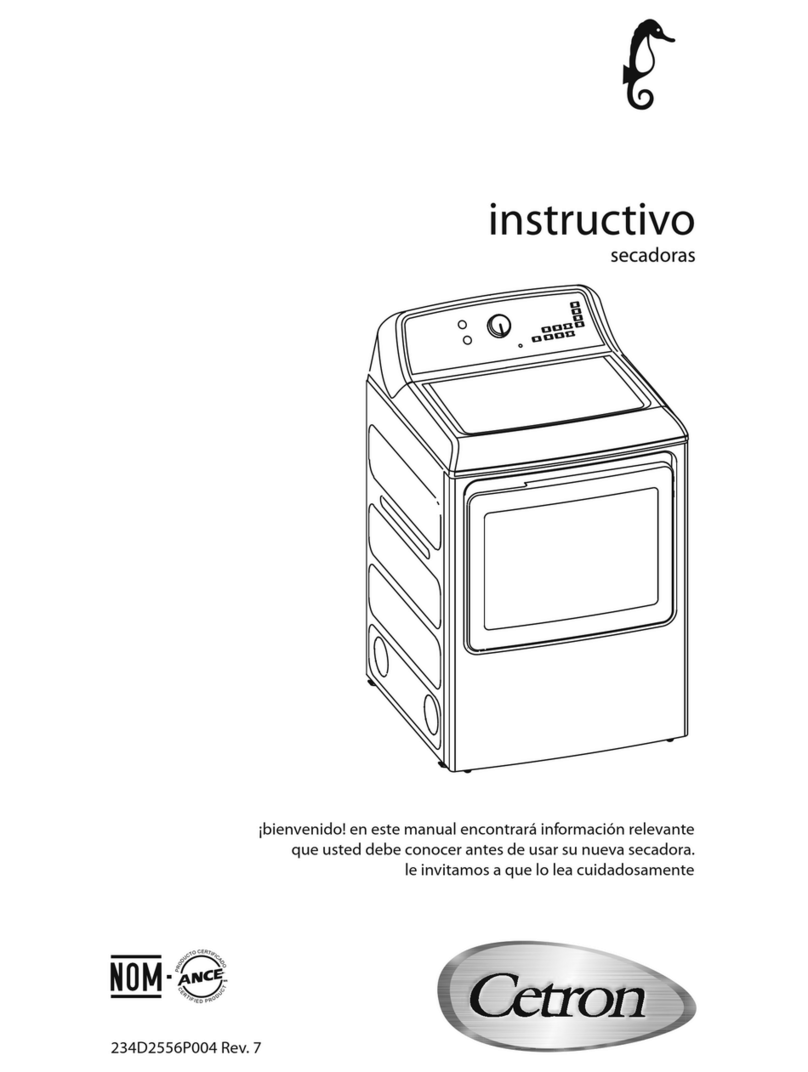
EN
The plug to be connected to the power supply lead and the
relative socket must be of the same type and comply with the
relevant regulations. Check that the mains voltage and fre-
quency are the same as the values marked on the name-
plate. The use of adapters or junctions is not recommended.
Never disconnect the plug by pulling on the power supply
lead.
The appliance is only disconnected from the electricity
supply if the plug has been removed from the socket or
the electrical system master switch has been turned off.
The power plug must be accessible after the appliance
has been installed.
The appliance must be installed using new sets of hoses
(supplied with the appliance). Old hose sets should not be
reused.
Take care that the appliance is not standing on the power
supply cable.
The washer-dryer must never be used on vehicles, on board
ships or planes, or in environments with hazards, such as ex-
plosive or corrosive environments (powders, vapours and
gases) or explosive and/or corrosive liquids,
Do not install the washer-dryer in places with a risk of frost.
Frozen pipes may burst under the pressure.
Make sure that the drain hose connected to the sink is se-
curely fastened and cannot move.
If it is not fixed in place, the repulsive force of the water might
thrust it away from the sink, causing the risk of flooding.
When connecting the hose to a sink also check that the wa-
ter drains from it quickly, as otherwise the sink may
overflow.
Do not overload the appliance.
Never use detergents which contain solvents or chemicals for
washing in the washer-dryer. They might damage the ap-
pliance and form poisonous vapours. These fumes might
also catch fire and explode.
Garments soaked in petroleum products must not be washed
in the washing machine. Before washing, check that gar-
ments do not contain inflammable devices (e.g. cigarette-
lighters, matches, etc.)
